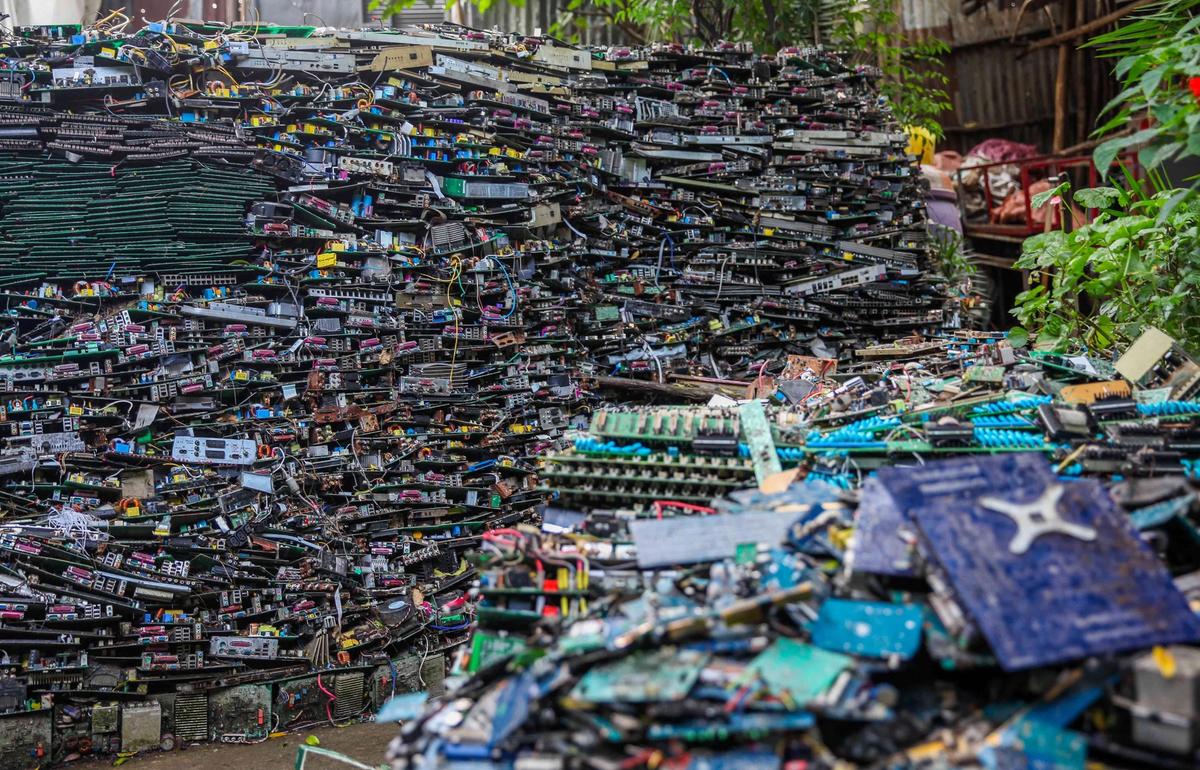Disused telephones pile up on a sky-high shelf, TV monitors lie buried among tarpaulin sacks, and stacks of computer motherboards rise up like a miniature mountain range. This is the studio, the treasure trove, of the Ethiopian artist Elias Sime, whose exhibition Dichotomy ፊት አና ጀርባ opens this week at Tanarte in Castello, Venice.
Sime, whose career spans some 25 years, makes his work from materials such as buttons, plastic bags and—over the past decade or so—e-waste, gathered from the Mercato in Addis Ababa, the largest open-air market in Africa. He threads and hammers these objects together into what are perhaps best described as sculptural paintings or collages—each of them speaking to a variety of themes, from our changing modes of connection to our relationship to nature.
In 2022, Sime participated in the Venice Biennale’s international exhibition, The Milk of Dreams, presenting two large-scale works. This latest show, an official collateral event of the Biennale, brings together seven pieces, their surfaces painstakingly formed out of hand-woven coated wires or, in other instances, carefully sliced up pieces of motherboard.
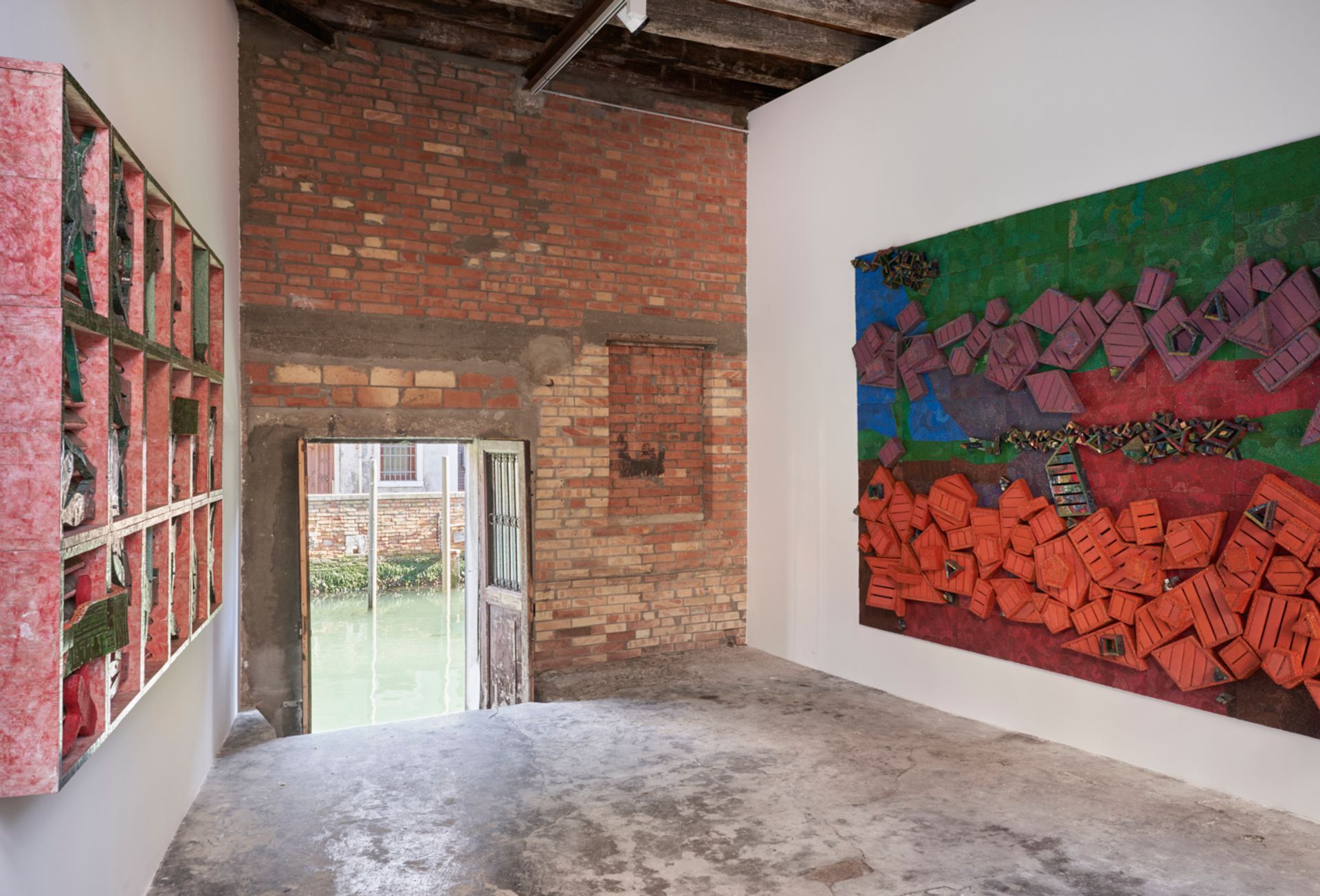
An installation view of Dichotomy ፊት አና ጀርባ
Many of them, from afar, resemble landscapes: on one, bulky, three-dimensional shapes rest on swathes of flat, vibrant green, blue and brown, their surfaces swirling and divided into patches—like farmland seen from above. On another, trees stand in profile, separated by panels of oversized plant motifs. This is not uncommon for Sime and no coincidence here, for the story the artist wants to tell ties deeply to the land: Dichotomy is an exploration of mineral extraction.
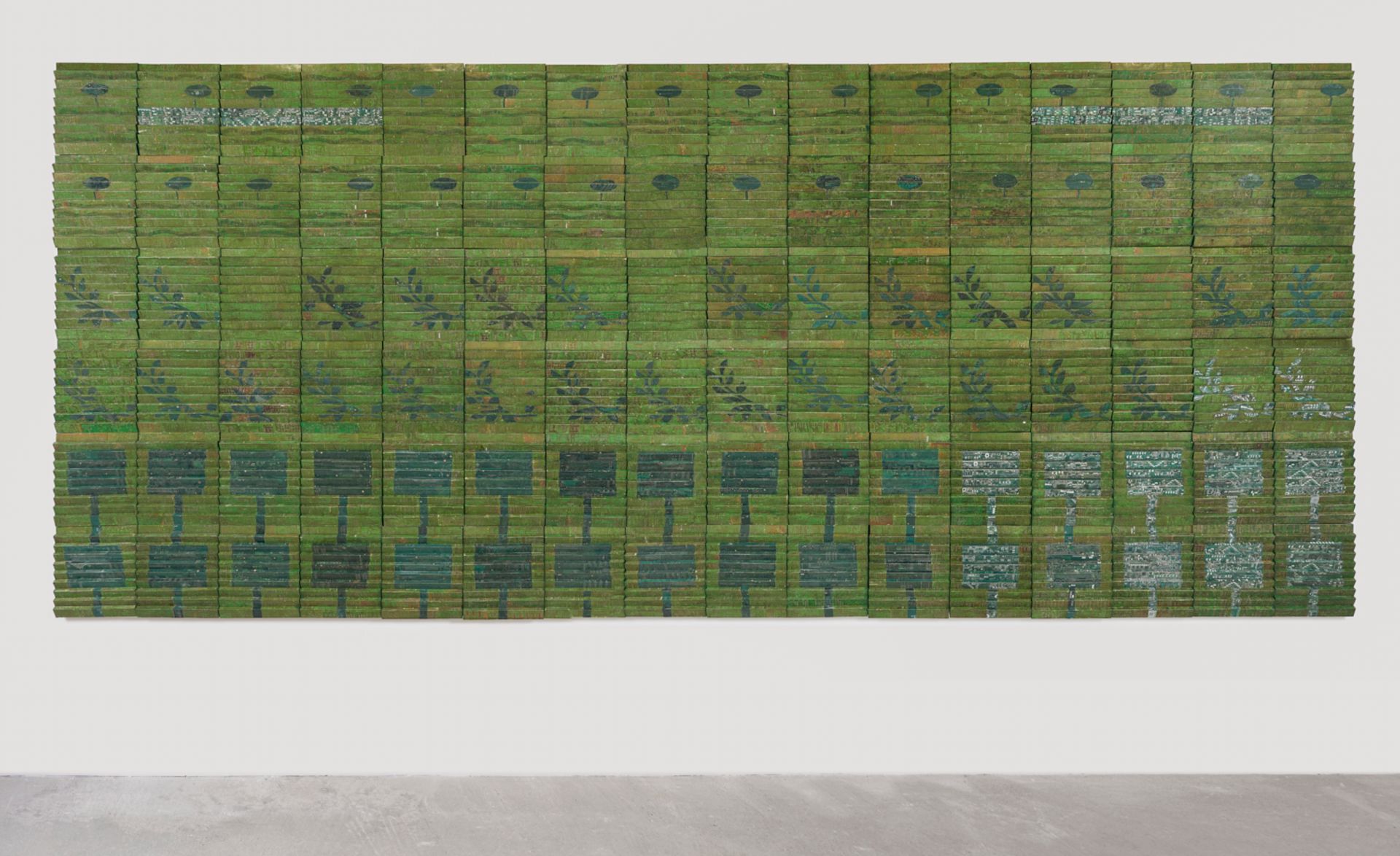
Elias Sime’s Tightrope: Dichotomy 3 (2023-24), on view in the exhibition
Photo: CKA + Studio Rio. Courtesy James Cohan Gallery
The shapes in the works on view, Sime explains, “are referencing the carving out of precious minerals”, natural resources—such as diamonds, borax and platinum—that then end up inside our electronic devices. This is a process that is hugely taxing on our planet: according to the UN’s latest Global Resource Outlook report, the stripping of raw materials is responsible for more than 50% of global warming impacts, including 90% of world-wide water stress and land-related biodiversity loss. Extraction, says the report, is projected to increase by around 60% by 2060.
Sime says he wants to put visitors face-to-face with such issues. He hopes the work, which is an extension of his Tightrope series, which he started in 2013, will pose questions such as: “How do you balance the earth from collapsing with the need for technological consumption? And how long can an attitude of competition be sustained?”
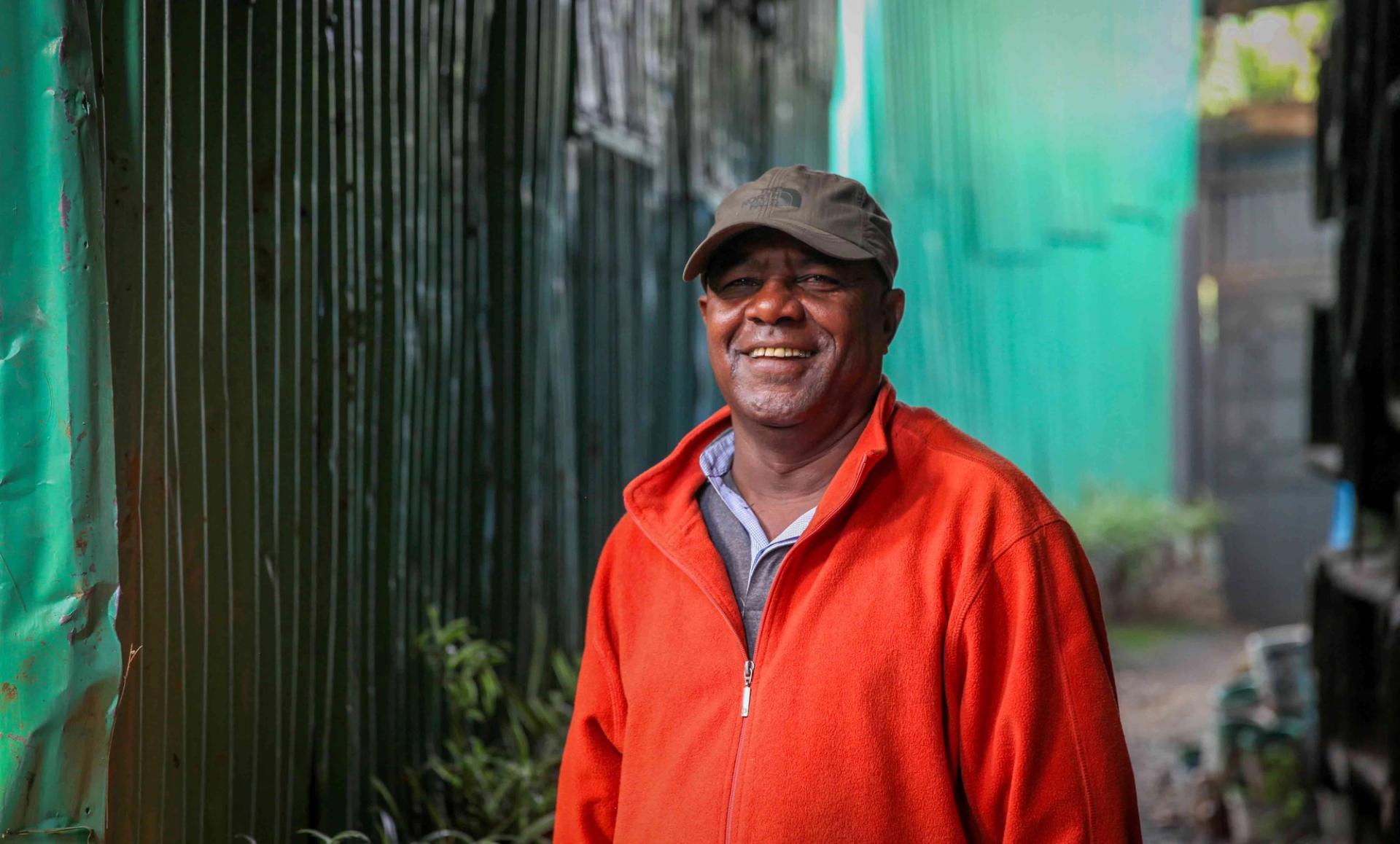
Elias Sime
Photo: Alice Hendy
The idea for the show came about from discussions with his creative partner, Meskerem Assegued. The pair have been collaborating since the 1990s—on exhibitions such as this, but also on public projects. In 2019, for example, they opened Zoma Museum, an art institution and school in Addis Ababa, Ethiopia’s capital. It is an urban oasis: filled with buildings formed using traditional materials such as mud and straw, with elaborate exteriors hand-crafted by Sime. Its bucolic grounds, meanwhile, are home to a range of indigenous trees and birdlife—as well as Sime’s private studio tucked away in a corner. Sime and Assegued have since been commissioned by Ethiopia's prime minister, Abigail Ahmed, to work on new architectural projects, and were recently granted land to build a cultural centre in the Entoto Mountains, high above the capital city.

Zoma Museum, established by Elias Sime and his creative partner Meskerem Assegued in 2019, is an urban oasis in Addis Ababa
Photo: Alice Hendy
Whether it is a museum or a work of art, Sime applies the same approach to his art as he does to his public projects: slow, steady and conscious of every detail. Trained in graphics, he begins everything with sketches, explaining he has made enough of them to last him “a lifetime”. He follows this with a meticulous period of production—in the case of the Venice series, this involved washing, then slicing of computer hardware, and days spent carefully weaving wire onto pieces of wood.
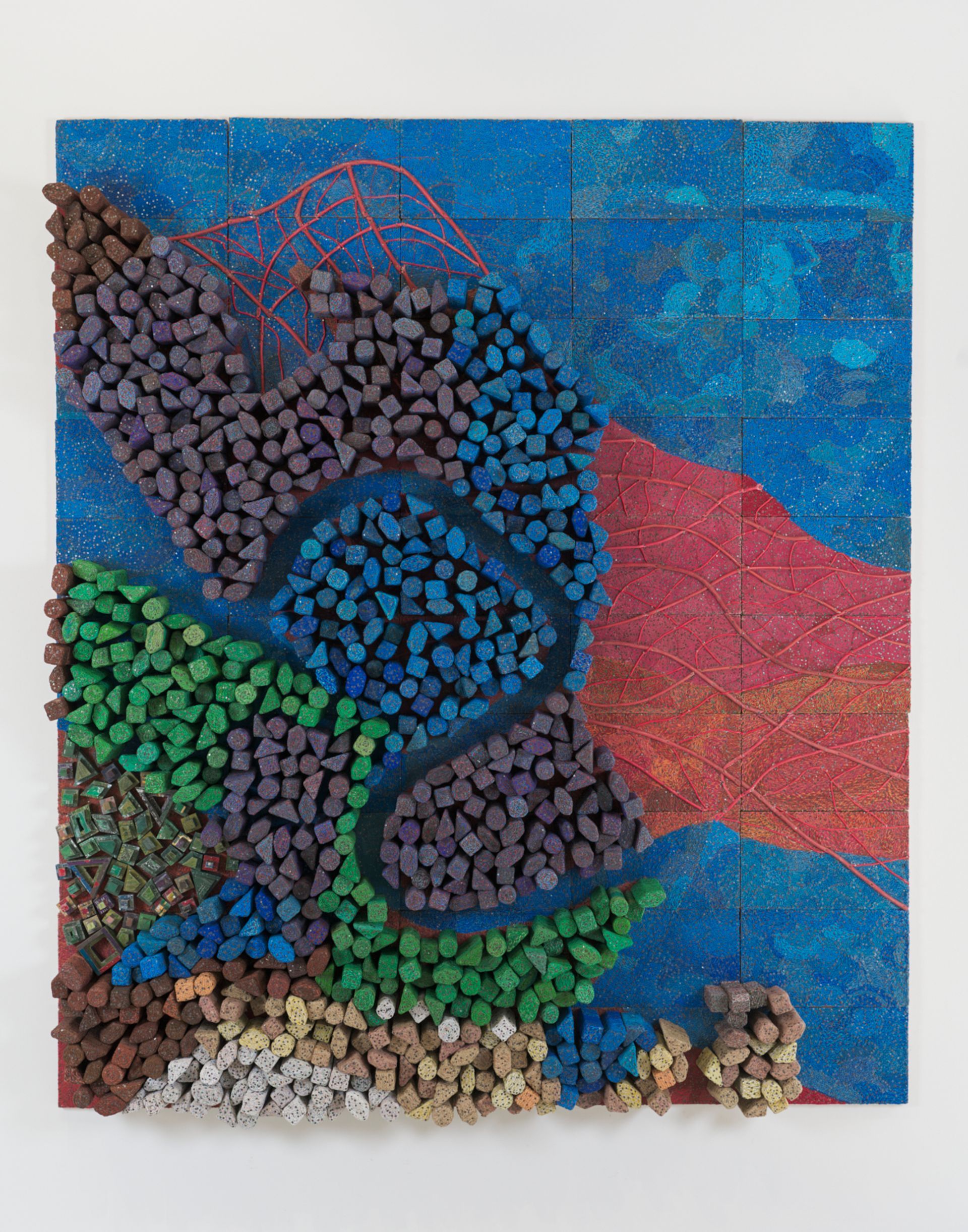
Sime’s Tightrope: Dichotomy I (2023-24), responds to the city of Venice, referencing the wooden piles on which much of the city stands
Photo: CKA + Studio Rio. Courtesy James Cohan Gallery
He is an artist who, by this stage, has exhibited all over the world, with a touring retrospective currently at Hastings Contemporary in the UK heading to Düsseldorf next year. Together with Assegued, Sime often thinks closely about the history of the place he is exhibiting in—he is drawn to Venice, for example, by the feats of engineering that have allowed for much of Venice to stand on timber piles. One work, Tightrope: Dichotomy I, (2023-24) reflects this interest.
But the story he wishes to tell is always a global one. Because, he says, when it comes to issues as big as our future: “if it involves any of us, it should involve all of us.”
- Elias Sime: Dichotomy ፊት አና ጀርባ, Spazio Tana, Castello, Venice, 20 April-24 November


